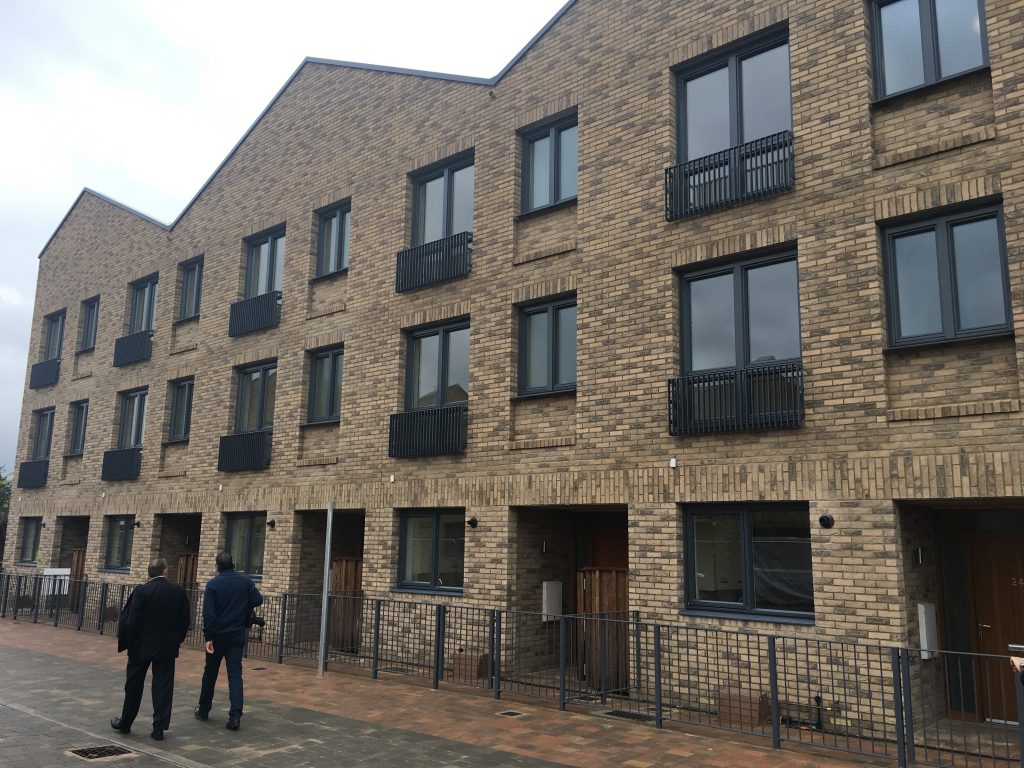The first anniversary of Sadiq Khan’s election as London Mayor was partly obscured by the general election campaign and much of his time and energy has lately been spent on coping with the impacts of terror attacks and Grenfell. His City Hall term so far has been substantially defined by his need to respond to an array of unwelcome events, beginning with Brexit and the Croydon tram crash. Khan has risen to these challenges well. Meanwhile, the machinery of core mayoral policy has kept running as best it can, even if with so many grave distractions since last May Londoners might be forgiven for forgetting what some of that actually is.
Here’s a reminder of one strand of it: housing. Remember that? Emerging from the viciousness of the mayoral race, Khan set himself what seemed to some to be the mildly finessed goal of a marathon length switch in the mix of new housing supply so that 50% of it eventually becomes “genuinely affordable” to Londoners. One part of that task entailed showing private developers a carrot and a stick and inviting them to chose which they preferred.
The carrot took the form of a promised speedy leap through mayoral planning powers hoops if a minimum of 35% of the homes proposed in new development schemes met the “genuinely affordable” criterion. The stick was the threat of mayoral number crunchers examining their sums and telling them to go away and try harder. Draft supplementary planning guidance setting out this policy was published in the autumn and responses to a consultation on it, which closed in February, are still being mulled over. But the formidable Estates Gazette (EG) believes it’s already having a good effect.
Ploughing through planning consents given up to mid-June this year, EG analyst Paul Wellman found that the proportion in which a 35% threshold has been crossed has already started to pick up after years of ongoing decline under Boris Johnson. Here’s the graph Paul has published on Twitter:

As Paul says, the big shift Khan is seeking will not happen overnight. Development is a long, slow business and, just be clear, what has happened is a rise in the proportion of sites providing 35% affordable from 15% of them in 2016 to 22% of them in 2017 so far. But things seem to have at least begun moving back in the right direction. Paul’s own article on the data (which sits behind a paywall) explains it in a lot more detail.
But even if Khan keeps edging the 35% affordable strike rate up, he still has a long way to go before all private sites are hitting it. And how can he hope to get to 50% of new homes from all sources combined being “genuinely affordable”?
Conservative AM Keith Prince, whose tone of pained disdain for Khan has brought a new dimension to scrutiny exchanges at City Hall, raised this question very plainly with Khan’s deputy for housing James Murray back in March. Murray, whose modest manner belies a mighty muscle of a brain, replied that the “long term strategic target” of 50% would be met firstly through the planning system without public subsidy (the subject of this article), secondly through the mayor’s affordable housing investment programme, which should help housing associations deliver up to 60% “genuinely affordable” through their own housing schemes, and thirdly an average of 50% affordable on public land, such as that owned by Transport for London.
Because these different routes produce different absolute numbers of homes – as opposed to percentages – it is hoped that the long term goal of 50% “genuinely affordable” will eventually be hit. And although it’s not precisely clear how long “long term” is, and although “affordable” to some won’t be “affordable” to all, and although the vagaries of market forces as the heat goes out of the highest end of the market and Brexit does its work are tricky to predict, we might be starting to see an early flowering of Khan’s more interventionist approach to making a larger portion of new homes built fall within the financial means of Londoners on low and middle incomes. Long may it bloom.
Estates Gazette’s Paul Wellman is a consistently good follow on Twitter.

